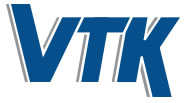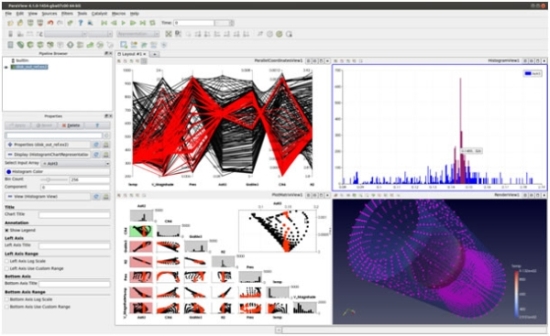 |
|||||
Home > News > Members and Partners News > KITWARE
![]()

Kitware's professional training courses offer the best opportunity to gain an in-depth understanding of Kitware’s open-source solutions. Tailored to your expertise level and your needs, these courses allow both users and developers to discover or master the benefit of tools such as ParaView or VTK.
Register directly online on Kitware’s website: http://training.kitware.fr
Kitware’s VTK and ParaView training session program for 2016:
- VTK – 14/03/2017 - LYON
- ParaView User – 15/03/2017 - LYON
- VTK Advanced – 29/03/2017 - LYON
- ParaView Advanced – 30/03/2017 – LYON
The 2017 Autumn Program will soon be online, don’t miss it!

HPCCloud is Kitware’s latest open-source tool, a web-based simulation environment to design and develop and end-to-end simulation workflow from HPC resources. With this tool, you can create a cluster using a cloud provider such as Amazon’s Elastic Compute Cloud, and tailor it to a particular simulation workflow in term of size, specification and software provisioned.
One of HPCCloud’s main strengths is its free of charge maintenance cost, since the cluster clouds can be shut down as soon as the workflow is complete.
HPCCloud comes with a couple of built-in workflows and can visualize the results with ParaViewWeb. HPCCloud simplifies the addition of new simulation workflows to support a wide range of domains and applications.
To get started using HPCCloud 0.9, go to https://github.com/Kitware/HPCCloud.

This release implements significant improvements as well as numerous features related to rendering and Web visualization.
This version marks the introduction of anti-aliasing feature in ParaView. While the 5.1 version introduced ParaView’s Intel OSPRay-based ray traced rendering backend, the 5.2 continues to brings better capacities. Other rendering features have improved significantly, such as volume rendering by vector components and vector magnitude, semi-translucent geometry rendering in parallel and mixed multiblock and composite dataset rendering.
In terms of Web Visualization, ParaView’s export for deferred rendering browsable databases, using the tool Cinema, have been updated and its performances enhanced.
To get started using ParaView 5.2.0, you can go to ParaView’s download page.

This release implements significant improvements as well as numerous features related to rendering, filtering and I/O.
This release brings VTK into Virtual Reality, enabling immersive visualisation using the Oculus Rift and HTC Vive. While the 7.0 version introduced a new rendering pipeline, the 7.1 continues to brings new rendering capabilities and better support for the new OpenGL pipeline.
7.1 also marks the introduction of new filters, such as threaded point cloud processing filters, as well as resampling filters. Numerous existing filters were also enhanced.
In terms of I/O, VTK 7.1 has been upgraded to the latest version of the TIFF library as well as several other enhancements to the other file formats.
To get started using VTK 7.1.0, git clone it or get it from the download page.
December 7, 2015 - Kitware's professional training courses offer the best opportunity to gain an in-depth understanding of Kitware’s open-source solutions. Tailored to your expertise level and your needs, these courses allow both users and developers to discover or master the benefit of tools such as ParaView or VTK. Register directly online on Kitware’s website: http://training.kitware.fr
|
|
| September 4, 2014 - Newly added to ParaView (and slated to be included in the upcoming ParaView 4.2 release) is a brand new Histogram View. Histograms are nothing new to ParaView. Using the Histogram filter and plotting the results in a Bar Chart View, you could always look at histograms for data arrays. What was lacking was the ability to then select bins in this histogram and see which data elements those corresponded to. To support this, we added a new Histogram View. You can show any arbitrary dataset, without the need for apply the Histogram filter in this view. The view will automatically show the histogram for the selected data array (which you can select using the Properties panel). These histogram parameters are now available under the Display section.
|
|
| September 4, 2014 - Kitware's professional training courses offer the best opportunity to gain an in-depth understanding of Kitware’s open-source solutions. Tailored to your expertise level and your needs, these courses allow both users and developers to discover or master the benefit of tools such as ParaView or VTK. Register directly online on Kitware’s website: http://training.kitware.fr
|
|
| January 20, 2014 - Kitware: ParaView 4.1.0 Available for Download! ParaView 4.1.0 is now available for download. With about 170 issues resolved, this release includes several bug fixes and feature enhancements. (Redesigned Color Map Editor Panel, enhancements to Find Data dialog, enhancements for interactions with Plots, Support for Python-based views…)
|
|
| January 20, 2014 - Kitware's professional training courses offer the best opportunity to gain an in-depth understanding of Kitware’s open-source solutions. Tailored to your expertise level and your needs, these courses allow both users and developers to discover or master the benefit of tools such as ParaView or VTK. Register directly online on Kitware’s website: http://training.kitware.fr
|
|
| September 10, 2013 -
This release marks the first change in the major version number since 2007. ParaView 4.0.1 is based on VTK 6.0 and hence includes all the fixes and enhancements that went into the VTK 6.0 release. |
|
| September 10, 2013 - Kitware's professional training courses offer the best opportunity to gain an in-depth understanding of Kitware's open-source solutions. Tailored to your expertise level and your needs, these courses allow both users and developers to discover or master the benefit of tools such as ParaView or VTK Next VTK and ParaView session: September 24 & 25, 2013 - Kitware's European offices in Lyon. |
|


